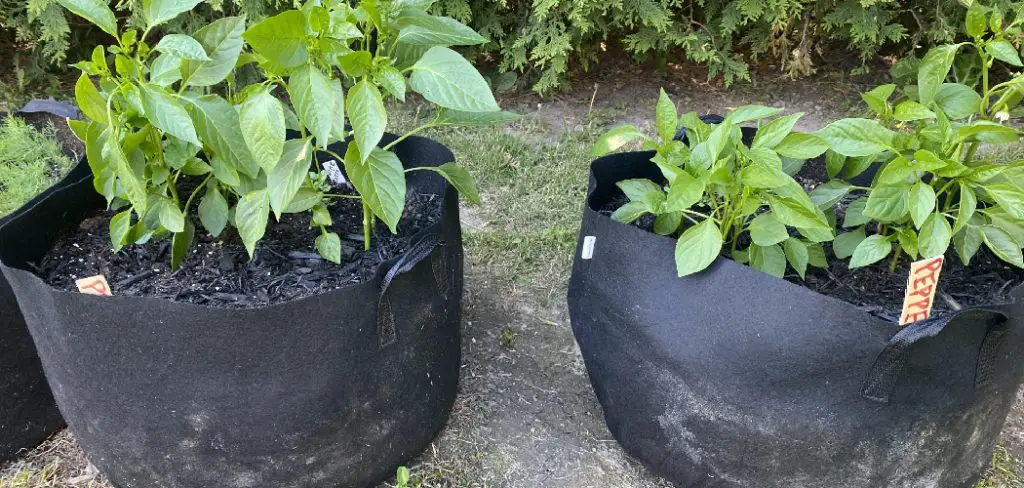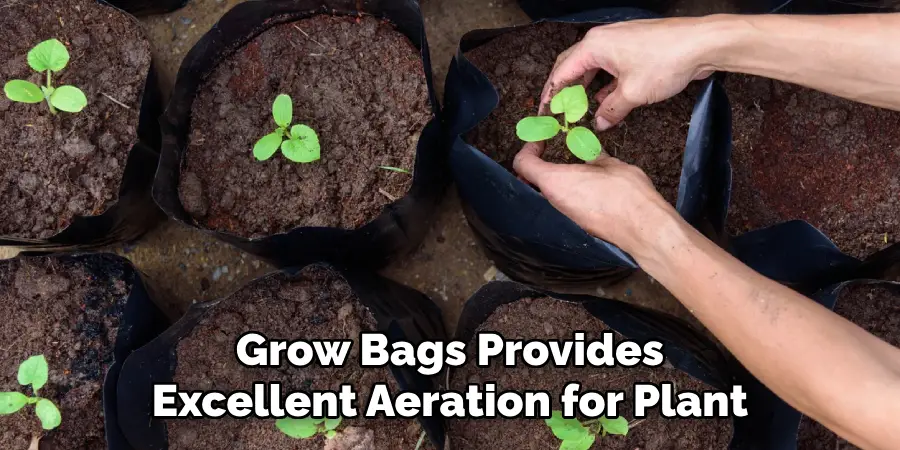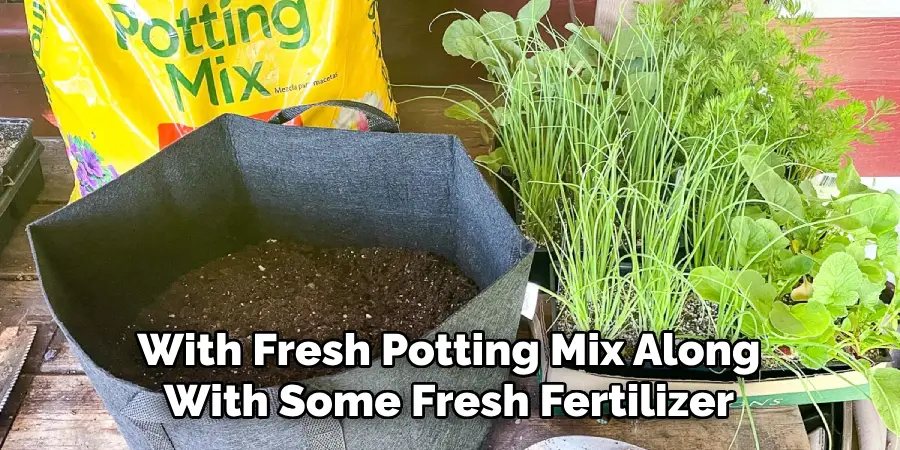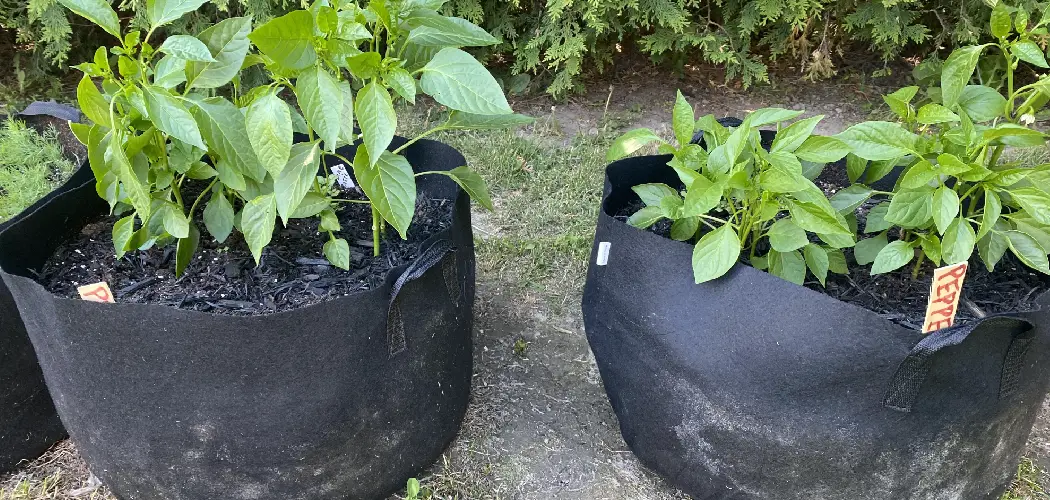Are you eager to unleash your green thumb and cultivate plants, but lacking the outdoor space for traditional gardening? Enter the world of “Grow Bags,” a versatile and space-saving solution that allows you to grow a variety of plants, from vegetables to flowers, on patios, balconies, or even indoors.

In this comprehensive guide, we will explore the art of crafting your own grow bags, enabling you to create a thriving mini-garden wherever you desire.
We’ll delve into the materials you need, the step-by-step process of making grow bags, and essential tips to ensure your plants flourish. Whether you’re a seasoned gardener or a beginner looking to embark on a plant-filled journey, learning how to make grow bags is a fantastic way to nurture your greenery and embrace the joys of gardening, no matter your available space.
Benefits of Using Grow Bags for Gardening
Grow bags are becoming increasingly popular among gardeners, and for good reason. These versatile gardening containers offer a number of benefits over traditional pots or planting directly in the ground.
Improved Drainage
One of the biggest advantages of using grow bags is their superior drainage capabilities. The fabric material allows excess water to drain out easily, preventing root rot and other issues commonly associated with overwatering. This also makes them great for plants that prefer well-draining soil, such as succulents and cacti.
Better Aeration
The porous nature of grow bags provides excellent aeration for plant roots. As air can flow freely through the fabric, this promotes healthy root growth and prevents moisture buildup that can lead to fungal diseases. This is especially beneficial for plants that require good airflow, such as herbs and vegetables.

Portability
Unlike heavy ceramic or plastic pots, grow bags are lightweight and easy to move around. This makes them a great option for gardeners with limited space or those who like to rearrange their garden frequently. You can also easily bring your plants inside during colder months without straining your back.
Prevents Root Binding
Plant roots have a tendency to circle around the edges of traditional pots, eventually becoming root bound and hindering growth. With grow bags, the air pruning effect prevents this from happening as the fabric allows roots to air prune themselves when they reach the edge of the bag. This promotes healthy root growth and eliminates transplant shock.
10 Methods How to Make Grow Bags
1. Choose the Right Soil
When making grow bags, it is important to choose the right soil for your plants. A good soil mix should contain a combination of organic matter, such as compost or peat moss, and inorganic material such as sand or perlite. This will ensure that your plants have access to all of the nutrients they need to thrive. Additionally, make sure to choose a soil that is well-draining and has a neutral pH level.
2. Select Suitable Containers
The next step in making grow bags is to select suitable containers for your plants. Grow bags can be made from any type of container, including plastic pots, fabric sacks, and even cardboard boxes. When selecting containers for your grow bags, make sure they are large enough to accommodate the root systems of your plants and have drainage holes at the bottom so excess water can escape.

3. Add Fertilizer
Once you have chosen the right soil and containers for your grow bags, it is time to add fertilizer. Fertilizers provide essential nutrients that help plants grow healthy and strong. For best results, use a slow-release fertilizer that will release nutrients over time rather than all at once. This will ensure that your plants receive a steady supply of nutrients throughout their growing season.
4. Plant Your Seeds or Seedlings
Once you have prepared your grow bags with soil and fertilizer, it is time to plant your seeds or seedlings into them. When planting seeds or seedlings into grow bags, make sure they are planted at the correct depth and spaced appropriately so each plant has enough room to spread its roots and develop properly. Additionally, be sure not to overcrowd your containers as this can lead to poor growth and disease problems down the line.
5. Water Regularly
In order for your plants to thrive in their grow bags, they must be watered regularly during their growing season. Make sure that you give them enough water without overwatering them as this can lead to root rot and other problems down the line.
Additionally, if possible try to use rainwater or filtered water when watering your plants as this will help prevent mineral buildup in the soil over time which can stunt plant growth and reduce yields significantly over time .
6. Monitor Temperature
Another important factor when it comes to caring for plants grown in grow bags is temperature regulation. During hot summer months, make sure that you keep an eye on temperatures inside the bag, as extreme heat can cause stress on young seedlings.
To keep temperatures regulated, consider adding a layer of mulch around each bag which will help insulate against extreme temperatures. Additionally, if possible, move containers out of direct sunlight during peak hours if temperatures become too high.

7. Prune Regularly
Regular pruning is also an important part of caring for plants grown in grow bags. Pruning helps stimulate new growth by removing dead leaves, branches, or flowers which prevents overcrowding within each container. It also helps promote air circulation between each plant while allowing more light penetration, which helps promote healthy growth overall.
8. Inspect Regularly
Regular inspections are also key when it comes to caring for plants grown in grow bags. Make sure you inspect each container on a regular basis looking for signs of pests or diseases such as wilting leaves or discolored foliage. If you do notice any signs of pests or disease, take immediate action by spraying with an appropriate pesticide or fungicide, depending on what type of pest/disease you are dealing with.
9. Harvest Properly
Harvesting correctly is also vitally important when it comes to getting maximum yields from each container garden. Make sure you wait until fruits/vegetables are ripe before harvesting them otherwise, their flavor may be compromised due to unripe fruit/vegetables being picked prematurely.
Additionally, be careful not to damage surrounding vegetation when harvesting so as not to disturb other nearby crops growing within the same container garden setup.
10. Reuse Bags
Finally, once harvest season has passed, don’t forget about reusing those same containers again next year! After cleaning out old soil, simply fill it back up with fresh potting mix along with some fresh fertilizer before planting new crops once again! This way, those same containers can get multiple uses over many years instead of having to be thrown away after a single use!

Things to Consider When Making Grow Bags
Grow bags have become increasingly popular in recent years, especially among urban gardeners and those with limited outdoor space. These lightweight, portable containers are a convenient alternative to traditional bulky planters and can be used for a variety of plants, from vegetables to flowers to herbs. If you’re interested in making grow bags for your own gardening needs, here are some important things to consider.
- Material: The most common material used for grow bags is fabric, such as geotextile or felt. Fabric grow bags allow for better air circulation and drainage compared to plastic or ceramic pots. They also tend to be more durable and can last for multiple growing seasons.
- Size: When it comes to size, there are various options available depending on your needs. Smaller, individual grow bags are great for herbs and small vegetables, while larger ones can accommodate larger plants like tomatoes or peppers. Make sure to choose a size that will give your plants enough room to grow and thrive.
- Drainage: Proper drainage is essential for healthy plant growth. When making grow bags, it’s important to ensure that there are adequate holes at the bottom of the bag for water to drain out. You can also add a layer of gravel or rocks at the bottom of the bag to improve drainage.
- Sunlight: Just like any other plant, the amount of sunlight that your grow bag receives will directly impact its growth and overall health. Before making a grow bag, make sure you have a good understanding of how much sunlight your plants will need and place the bag in an appropriate location.
Conclusion
The possibilities of what you can make with grow bags are vast and varied. From urban balconies to sprawling botanical gardens, the potential applications in growing plants is a great way to get involved in gardening without worrying about soil or space. Grow bags give individuals the freedom to decide what type of environment they want for their plants and cultivate it with ease.
Plus, they are inexpensive, low-maintenance, and lightweight; perfect for beginning gardeners as well as experienced botanists alike. Take it from us: if you’ve been looking how to make grow bags, give it a try! Not only will you save yourself time and money but also create something unique that nobody else but you has.
With some research, practice, and a bit of patience, you will be able to put together your very own grow bag that could blossom into something truly amazing.


